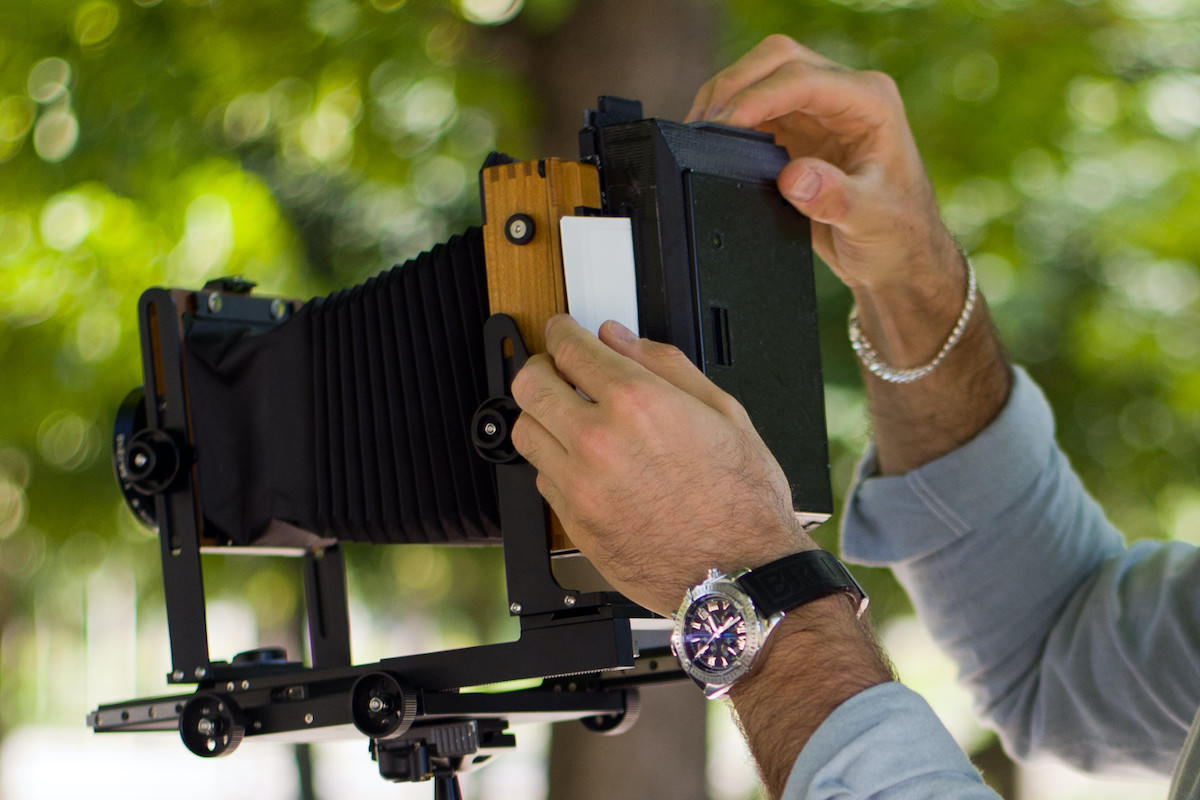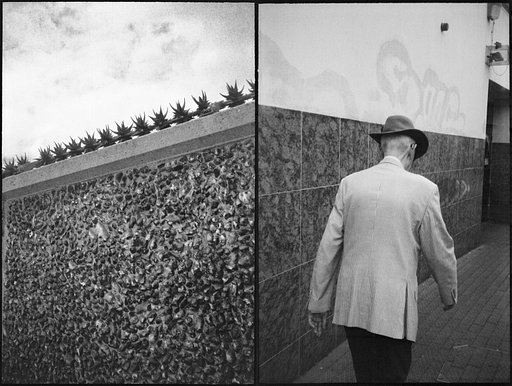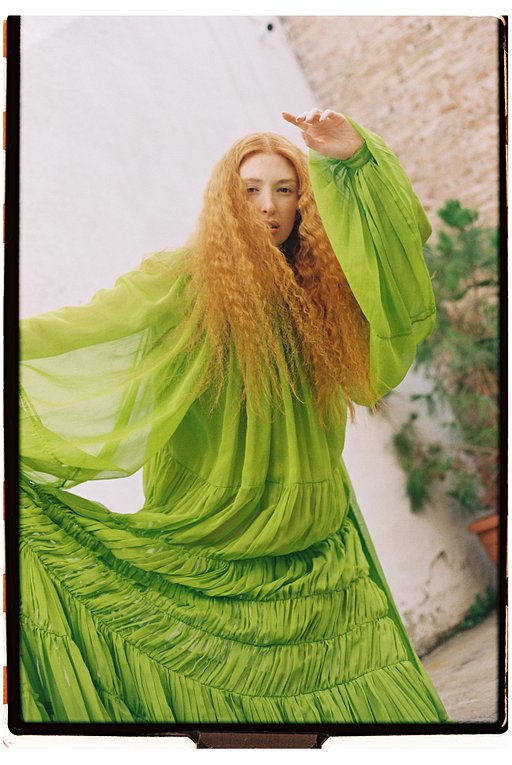Monochrome Memories—A LomoGraflok Photo Series by Rodrigo Morales
2 13 Share TweetBack in October, photographer Rodrigo Morales received the LomoGraflok 4×5 Instant Back and intended to use it for practicing his large-format workflow. However, he "fell in love with the medium and its potential to create high-quality photographs", which jumpstarted an instant series called the Monochrome Memories. Get to know about Rodrigo and his project, as well as his experience using the LomoGraflok, in this interview.

Rodrigo, it's nice to (virtually) meet you. Please introduce yourself to our readers—what do you do and what are your other interests aside from photography?
I am a 21-year-old photographer from Riverside, California. My time is dedicated towards progressing my art education which results in a busy life as a full-time creative. I spend my days making lots of analog photographs while also dabbling in other mediums like sculpture, video, screen printing, and ceramics. During my time away from school I spend time making music in a hardcore band and partake in my local music scene. While it can sometimes feel like I’m stretching my arms in too many directions, I recognize the essential importance these influences play in shaping my personal relationship with photography. At the end of each day, I feel gracious to be an individual who has the opportunity to create constantly.
What's your creative process like as an artist?
Thematically, I feel my creative process begins with treating my day-to-day experiences with an open mind. I try to pay attention to the humans, structures, and even distractions that surround me on a day-to-day basis and question their earthly relationship. This type of contemplation inspires me to document and helps me to explore with intention, which is important for me when working with larger formats. Sometimes these influences are extremely personal like in Monochrome Memories, but other times these influences are very loose and fun. For example, I’ve recently been on a strange kick for hunting down mid-late 20th-century ice machines here in Southern California.
The technical side of my creative process is often fueled by watching films and reading photobooks. I love learning from the way these mediums push narrative through their execution of light and color. When I go out to make photographs I most often create them alone as I feel it allows me to interpret my subjects in a more personal and honest way. Photography as a whole is a very intimate experience for me and I romanticize the idea of using the medium to express my own visual experience of the world.
As someone who studies fine art photography, are you confined by a set of rules or standards?
I believe diving deep into fine art photography has done the opposite of restricting me to a technical understanding of the art form. The more I learn about meaningful historical work in photography the more I realize art is most successful when an artist leaps outside of their technical confines and infuses themselves into the medium. I’ve been taught that loosening our understanding of photography’s technical foundation allows for us to better represent the feeling of seeing through an individual’s artistic eye.
What inspired you to shoot using a large format camera?
I was greatly inspired to pick up large format after I was introduced to the work of photographers Alec Soth and Justine Kurland. The moment I experienced Soth’s Sleeping by the Mississippi was quickly burnt into my memory. When reading the book I was pulled into the images page by page and given chills by the lonesome interactions Alec documented. Justine Kirland’s body of work, Girl Pictures, introduced me to a new form of visual narratives that seemed to present life in a way movies often attempt to. In both of these works, I felt the camera played its own role of slowing each photo’s moment in time resulting in a very hard to describe phenomenon. With this inspiration, I made it my goal to make the move to large format sooner rather than later.
Please tell us more about your series, Monochrome Memories. How did this project come about?
Monochrome Memories technically started almost two years ago now. The idea first started during the first major COVID shutdown here in America. I was then spending lots of time living in my childhood home and the environment brought back familiar feelings of anxiety, tension, and uneasiness that remained unresolved from my childhood. This renewed experience ultimately led me to try and reevaluate the concept of home through my growing maturity and relationship with photography.
I initially jumped into creating by taking portraits of homes in their entirety influenced by my appreciation for Todd Hido’s House Hunting, but over time narrowed down my exploration of these homes to the small bits and pieces that are often overlooked. For almost a year now, I have shifted my focus to documenting the visual cues in houses that work to create the environment of domesticity. When I started using the LomoGraflok back, I knew it was the missing piece I desired to present my ongoing project. The medium of instant photography itself echoes memories of family photo albums and scrapbooks. We as humans are so attached to instant photos in a personal and intimate way, much like we are connected to the memories of our homes.
This brings us to the present day, I am currently revisiting a remainder of photos I previously shot on negatives and recapturing them on Instax with my 4x5. My hope is to present this collection of domestic photographs to audiences and allow them to build their own narrative of what the home feels like. As for the future of this project, I hope to bring the viewer experience beyond seeing the images online. I have begun to take the physical instant photos and create an installation piece to interact with these pieces in a way that even further reflects this theme of domesticity. When I finish, I hope I can integrate this piece into a wider gallery commemorating the body of work.
How do you find the LomoGraflok so far? What do you like about it? Did you find anything challenging while using it?
I absolutely love the LomoGraflok and have been using it nearly every day for the past couple months! Prior to using this product I would use a viewfinder app on my phone to test my 4x5 shots. This worked great and had its benefits for time efficiency, however the LomoGraflok provides an unmatched advantage in allowing me to preview shots with true film grain and color. The process requires a little extra work in inserting the framing mask, but hey you came all this way to shoot a large format camera. Might as well go all in!
The most challenging part I encountered was properly removing the darkslide. The LomoGraflok back would slightly jiggle when attached to my Chamonix 4x5 N2. I was unaware of the effects of this at first, but soon noticed the slightest light leaks that would form along the left and right borders of the instax. Not to worry, as gently resting my hand on top of the film back while holding it against my camera’s rear standard easily solved the scenario. After solving this piece of the puzzle, I took note of the light leak effect and was inspired to use it to my advantage. The slight streaks reminded me aesthetically of the anamorphic flares seen in Paul Thomas Anderson’s Punch Drunk Love. This effect can be seen contributing to moody purple leaks in a few of the photos here in Monochrome Memories.
What advice would you give future users of LomoGraflok?
LomoGraflok ultimately allows you to have fun in a format that is often too costly to do so consistently. I encourage everyone to dive into that fun! For the same cost of 10 sheets of 4x5, you can shoot nearly 40 or more LomoGraflok shots (depending on Instax prices in your region of course). Enjoy the amount you can shoot and its instant nature! For large-format beginners, the LomoGraflok can be used as a more than solid entry to Large format and allows you to better justify beginner mistakes at a more efficient cost and turnaround than sheet film. For Experienced shooters, this tool can serve as a chance to break away from conventions and try different things with all the creative liberty that comes with operating a view camera.
Follow Rodrigo on Instagram to see more of his photos! Curious about the LomoGraflok? Visit our shop for more details.
written by shhquiet on 2022-04-14 #large-format #instant-photography #lomograflok #rodrigo-morales






























2 Comments